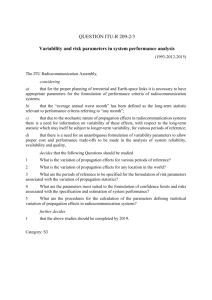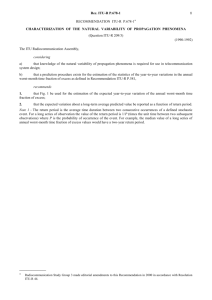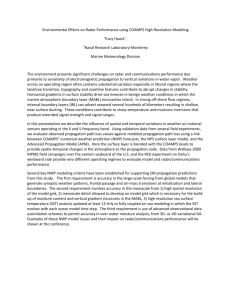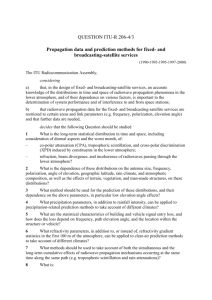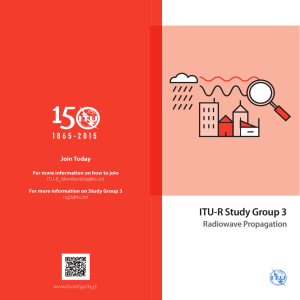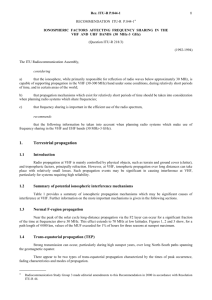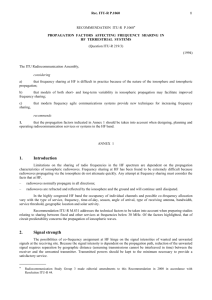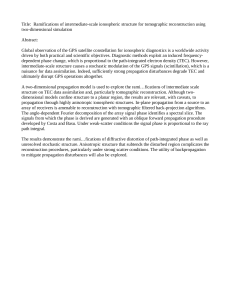Propagation data and prediction methods required for trans
advertisement
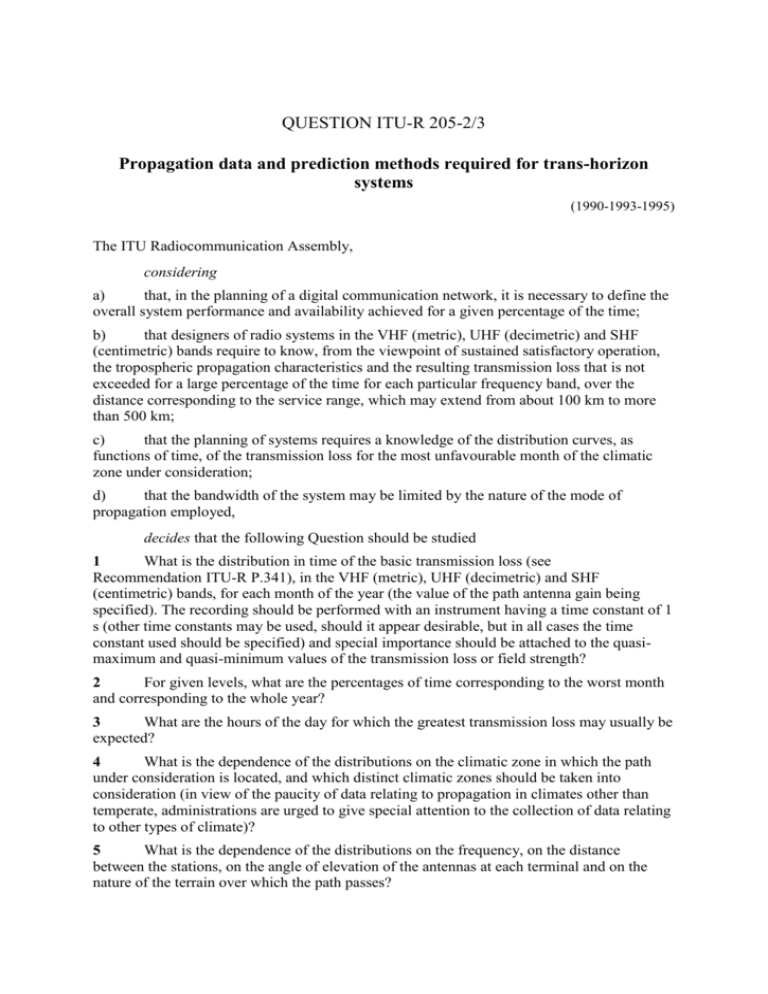
QUESTION ITU-R 205-2/3 Propagation data and prediction methods required for trans-horizon systems (1990-1993-1995) Q. ITU-R 205/3 The ITU Radiocommunication Assembly, considering a) that, in the planning of a digital communication network, it is necessary to define the overall system performance and availability achieved for a given percentage of the time; b) that designers of radio systems in the VHF (metric), UHF (decimetric) and SHF (centimetric) bands require to know, from the viewpoint of sustained satisfactory operation, the tropospheric propagation characteristics and the resulting transmission loss that is not exceeded for a large percentage of the time for each particular frequency band, over the distance corresponding to the service range, which may extend from about 100 km to more than 500 km; c) that the planning of systems requires a knowledge of the distribution curves, as functions of time, of the transmission loss for the most unfavourable month of the climatic zone under consideration; d) that the bandwidth of the system may be limited by the nature of the mode of propagation employed, decides that the following Question should be studied 1 What is the distribution in time of the basic transmission loss (see Recommendation ITU-R P.341), in the VHF (metric), UHF (decimetric) and SHF (centimetric) bands, for each month of the year (the value of the path antenna gain being specified). The recording should be performed with an instrument having a time constant of 1 s (other time constants may be used, should it appear desirable, but in all cases the time constant used should be specified) and special importance should be attached to the quasimaximum and quasi-minimum values of the transmission loss or field strength? 2 For given levels, what are the percentages of time corresponding to the worst month and corresponding to the whole year? 3 What are the hours of the day for which the greatest transmission loss may usually be expected? 4 What is the dependence of the distributions on the climatic zone in which the path under consideration is located, and which distinct climatic zones should be taken into consideration (in view of the paucity of data relating to propagation in climates other than temperate, administrations are urged to give special attention to the collection of data relating to other types of climate)? 5 What is the dependence of the distributions on the frequency, on the distance between the stations, on the angle of elevation of the antennas at each terminal and on the nature of the terrain over which the path passes? -26 What are the limitations imposed on the bandwidth of the system by the propagation process (diffraction, partial reflection, scattering, etc.)? 7 – – What models can be used, in particular: to describe the dispersive behaviour of the transmission channel particularly for digital systems; for the prediction of system performance and availability degradation? 8 What is the degree of correlation of fading on different radio channels on the same path and different paths in a multi-hop link? 9 What is the improvement to be gained using diversity (space, angle, frequency and polarization)? NOTE 1 – Priority will be given to studies relating to § 7. further decides 1 that the above studies should be completed by 2019. Category: S2
